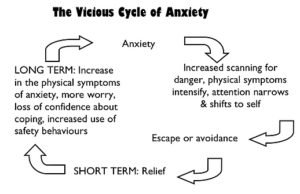Ch-Ch-Changes: Embracing Change through Dialectical Thinking
By Michelle Bottone, LMFT
In the David Bowie song, Changes, the lyrics ring out, “Turn and face the strange”. These lyrics echo a truth about the world of which people have become acutely aware in the last year: change inevitably occurs throughout our lives. Change is our constant companion in life. It will challenge us, and at times nudge us out of our comfort zone. It can cause significant discomfort as with a job loss, a relationship ending, or a death of a loved one. Change can also be liberating and fulfilling. Resistance to change often manifests as denying reality (“This cannot be happening to me!”), bargaining with reality (“If I don’t ever do that again, do you think you could still love me?”), resentment (“This is not fair!”), and excessive, unrelenting anger. However, resistance amplifies suffering and unfortunately, does not help people adapt to the change more effectively. Dialectical Behavioral Therapy (DBT), dialectical approach framework can be fundamental in enhancing one’s capacity for coping, understanding, and tolerating change.
1. Let go of assumptions and using extreme language.
"I am never going to be able to move on." Have you ever told yourself this? Utilizing words such as "always" and "never" are polarizing, limiting beliefs. Additionally, it is a type of assumption that narrows our thinking and generates nondialectical behavior. An example of a dialectical statement would be, "I feel down about losing my job. I am going to have to make an effort to seek new opportunities".
2. Practice Radical Acceptance.
When we resist reality, we increase our pain and suffering. In order to live freely and fully, we must acknowledge and accept reality as it is, good, bad and everything in-between. Acceptance is not the same as approval. For example, you might be upset that your relationship with your significant other is over. However, to move on and be open to new love you must accept that the relationship has ended, and all the sadness that that reality brings.
3. Practice becoming familiar with change.
Take small steps towards discomfort and trying something new. Ask a colleague whom you typically would not reach out to for their opinion on a project. It can be as simple as choosing a new interest or hobby. Research indicates that when we experience an entirely new circumstance, a distinctive part of the brain is activated and releases dopamine (reward/motivation chemical).
By virtue of adopting a dialectical mindset, we are better able to cope with life’s changes and propel forward. When a hermit crab’s shell no longer fits, it must go out and seek a brand-new shell. If a hermit crab decides to stay in its current shell, the crab’s health is jeopardized. If we do not accept change, our pain and distress will be heightened. If you are resisting change and your beliefs are too restricting, it’s time to discover a newly minted shell.
























